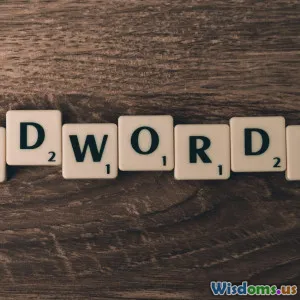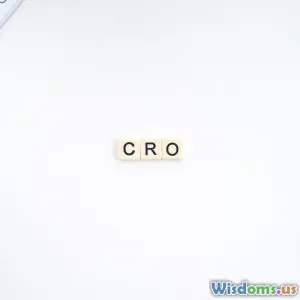
Maximizing Reader Engagement
5 min read Unlock tactics to boost reader engagement by mastering content creation and writing strategies that captivate audiences. (0 Reviews)
Maximizing Reader Engagement: The Ultimate Guide for Content Creators
Engaging your readers is no longer just a nice-to-have; it's essential. In the crowded digital world, capturing attention is the first step. But keeping it? That’s where many content creators stumble. Imagine writing an article so irresistible that your readers not only finish reading but also eagerly share it and interact with it. This guide dives deep into how you can maximize reader engagement through strategic content creation and compelling writing.
Why Reader Engagement Matters
Engagement is more than just clicks or views—it's about stimulating meaningful interactions that create lasting impressions. Engaged readers spend more time on your content, share it with their networks, and return for more. According to a 2021 Nielsen Norman Group study, users typically read only about 20% of the text on a web page. This highlights the challenge and necessity for creators to craft content that truly hooks and maintains interest.
A well-engaged audience can lead to increased loyalty, higher conversion rates, and better SEO rankings as search engines interpret engagement metrics favorably.
Crafting Content That Hooks: The Power of a Magnetic Introduction
The introduction is your make-or-break moment. It should spark curiosity and promise value without overwhelming the reader. Consider the strategies employed by top-tier media:
- Pose a provocative question: "What if your writing could capture attention in just 5 seconds?" provokes curiosity.
- Share a surprising fact: For example, "Did you know that only 20% of web readers actually finish an article?"
- Tell a short anecdote: Stories connect emotionally, driving readers to continue.
Example:
In Joe Pulizzi’s book Content Inc., he emphasizes starting content with a 'compelling story or a question' to immediately pull readers in.
Structure That Guides Readers Smoothly
Clear, logical organization of your writing helps serialization and retention. Breaking the body into digestible, titled sections lets readers scan and dive into relevant parts easily.
Use Subheadings Wisely
Subheadings act like signposts, guiding the reader. Descriptive subheadings help increase content skim-ability, a crucial factor considering that 73% of online readers scan rather than read word-for-word.
Incorporate Lists and Bullet Points
Bullet lists increase readability and make complex information accessible. For instance:
- Deliver clear benefits
- Make information actionable
- Enhance content clarity
Writing Style That Connects and Converts
Tone, voice, and clarity heavily influence engagement. Nobody wants to read dry, jargon-filled prose.
Be Conversational
Write as if you're speaking directly to the reader. This creates intimacy and trust. For example, use second-person pronouns like “you”.
Employ Storytelling
According to neurologist Dr. Carmen Simon, stories trigger brain regions that control emotions and memory. A compelling narrative helps retain information longer than plain facts.
Use Powerful, Active Language
Active verbs invigorate sentences. Instead of "Content is generated by writers," say "Writers generate content."
Avoid Jargon and Overcomplication
Complex terms alienate readers and increase cognitive load. A reader-friendly article welcomes all proficiency levels, broadening your audience.
Incorporating Visuals and Interactive Elements
Text alone often falls short in engagement. Multimedia elements elevate the experience.
Data-Driven Visuals
Graphs and infographics clarify statistics and trends. For example, HubSpot reports that including visuals increases readership by 80%.
Videos and Interactive Quizzes
Videos engage differently by combining audiovisual stimuli. Interactive quizzes invite participation, increasing behavioral engagement.
Examples of Success
BuzzFeed frequently uses quizzes (
Content Creation & Writing
Rate the Post
User Reviews
Popular Posts





















